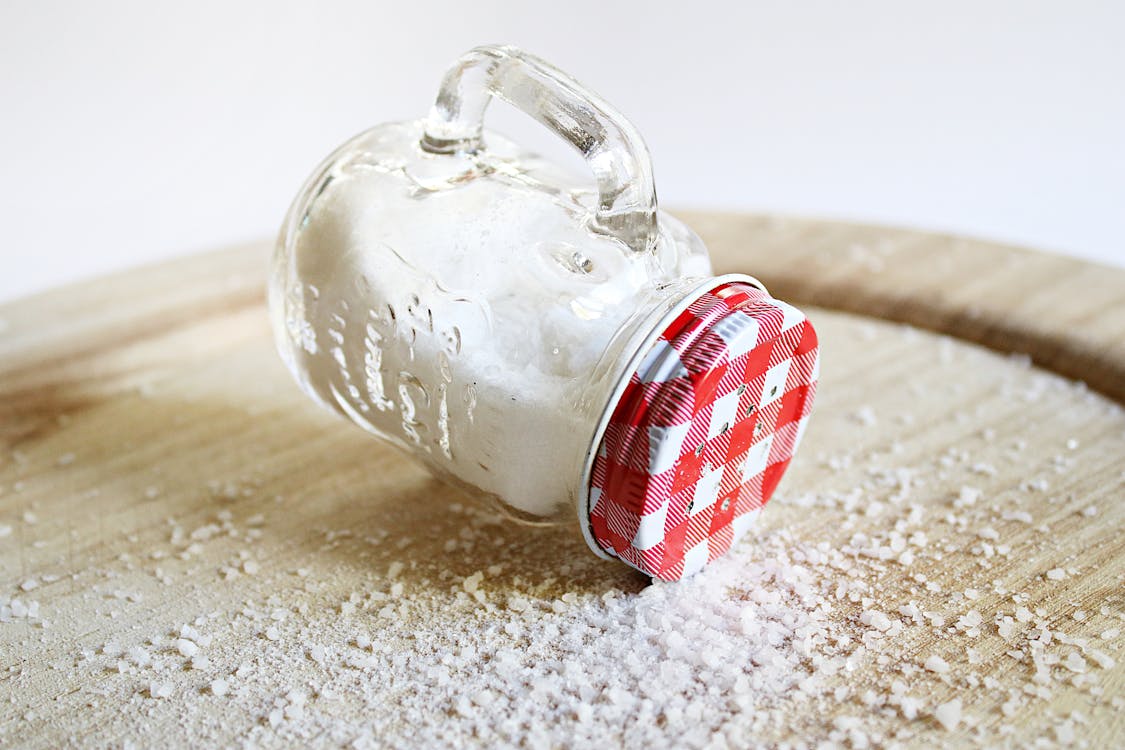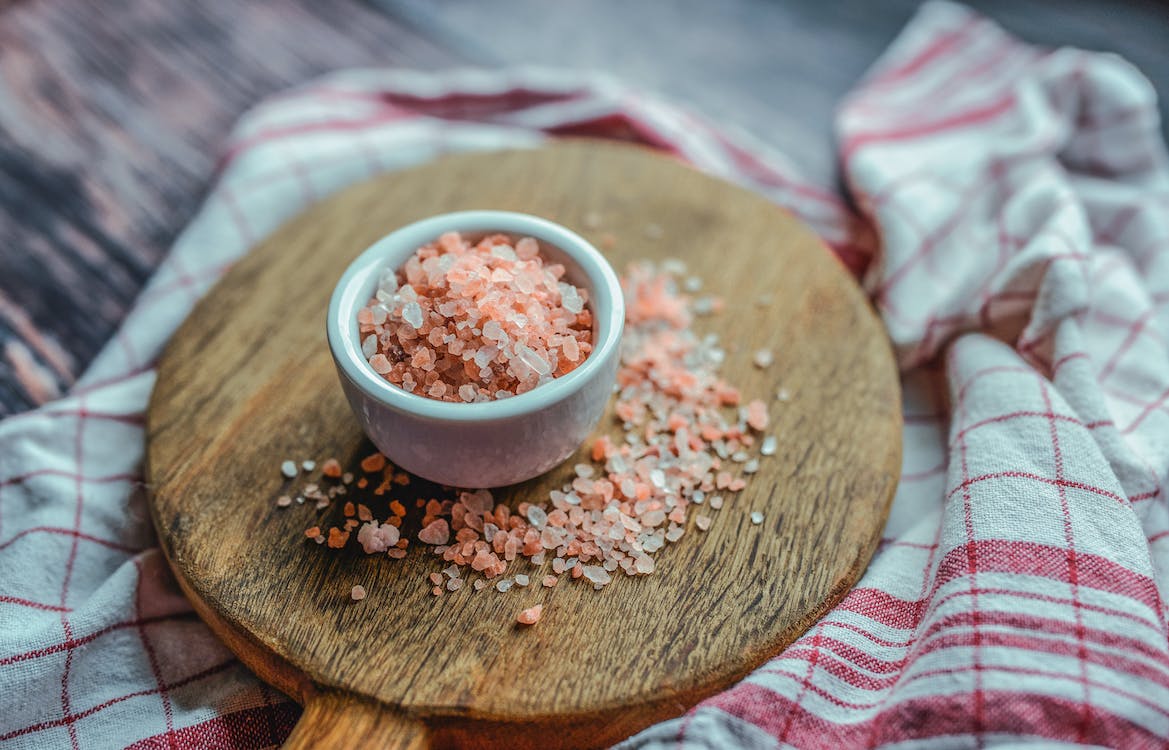10 Types of Salt and their Health Benefits
1. Table salt prevents iodine deficiency
Table salt, commonly known as sodium chloride, serves as a crucial dietary source of iodine, a micronutrient essential for thyroid function and overall health.
Iodine deficiency can lead to various health problems, including thyroid disorders and developmental issues, particularly in pregnant women and children.
Table salt fortified with iodine helps prevent iodine deficiency by ensuring adequate intake of this vital micronutrient. The addition of iodine to table salt is a public health measure aimed at addressing iodine deficiency disorders (IDDs) and promoting optimal thyroid health in populations worldwide.

Read Also:
Focus While Studying: 10 Proven Methods
2. Sea salt contains minerals which are beneficial for health
Sea salt, harvested from evaporated seawater, is prized not only for its distinctive flavor but also for its rich mineral content, which contributes to its potential health benefits.
Unlike table salt, which is heavily processed and stripped of minerals during refining, sea salt retains trace amounts of minerals such as magnesium, potassium, calcium, and zinc.
These minerals are essential for various bodily functions, including nerve function, muscle contraction, bone health, and electrolyte balance.
3. Himalayan pink salt contains iron oxide which is a trace mineral
Himalayan pink salt, renowned for its unique pink hue, boasts more than just aesthetic appeal. It contains iron oxide, commonly known as rust, which contributes to its coloration and is also recognized as a trace mineral.
Iron oxide, present in minute quantities within Himalayan pink salt, is essential for various bodily functions. It plays a crucial role in oxygen transport, aiding in the production of hemoglobin, the protein responsible for carrying oxygen in the blood.
The presence of iron oxide in Himalayan pink salt underscores its natural origins and contributes to its nutritional profile.
4. Kosher salt is used in koshering meats
Kosher salt, with its larger, coarser grains, is commonly used in the process of koshering meats, a practice rooted in Jewish dietary laws.
Unlike table salt, which contains additives like iodine and anti-caking agents, kosher salt is typically pure salt without any additives.
When koshering meats, kosher salt is used to draw out blood, which is forbidden according to kosher dietary laws. The coarse texture of kosher salt helps to absorb moisture from the surface of the meat, facilitating the removal of blood and impurities.
Read Also:
11 Best Ways to Improve Your Digestion
5. Black salt aids in digestion
Black salt, also known as Kala Namak, is a type of rock salt that is commonly used in South Asian cuisine and traditional medicine practices.
It is revered not only for its unique flavor, which has a distinctive sulfurous and earthy taste, but also for its potential health benefits, including aiding in digestion.
In Ayurveda, the traditional Indian system of medicine, black salt is believed to stimulate digestive enzymes and promote the secretion of digestive juices, which can help improve digestion and alleviate symptoms such as bloating and gas.

6. Fleur de Sel or Flower of Salt is use as finishing salt
Fleur de Sel, also known as “Flower of Salt,” is a premium sea salt prized for its delicate flavor and unique texture. This artisanal salt is hand-harvested from salt pans or salt marshes, where it forms as thin, delicate crusts on the surface of seawater.
Due to its labor-intensive harvesting process and limited availability, Fleur de Sel is considered a gourmet product and commands a higher price compared to other types of salt.
Fleur de Sel is often used as a finishing salt, sprinkled over dishes just before serving to enhance their flavors and add a touch of elegance.
7. Smoke salt gives smoky flavour to dishes
Smoke salt, as its name suggests, infuses dishes with a rich, smoky flavor reminiscent of traditional smoking methods.
This unique salt is created by slowly smoking coarse sea salt over wood chips, allowing the salt crystals to absorb the aromatic smoke.
The result is a seasoning that imparts a bold, savory flavor to a wide range of foods, from meats and seafood to vegetables and grains. Smoke salt adds depth and complexity to dishes, elevating their taste profile and providing a hint of outdoor cooking essence.
Read Also:
Pregnancy: Signs, Symptoms, Overview, Health Tips You Should Know
8. Red alaea salt gives reddish colour to dishes
Red Alaea salt, a traditional Hawaiian sea salt, is renowned for its distinctive reddish hue, which adds visual appeal to dishes while imparting a subtle mineral flavor.
This unique salt gets its vibrant color from the red volcanic clay, known as “alaea,” which is naturally abundant in certain Hawaiian soils.
The clay is traditionally mixed with sea salt, creating a salt blend that not only enhances the appearance of dishes but also provides a mild earthy flavor.
9. Sel Gris also known as grey salt retains moisture and has mineral ich flavour
Sel Gris, also referred to as grey salt, is a coarse sea salt that is harvested through the evaporation of seawater. Its distinct grey color comes from the mineral-rich clay found in the salt beds where it is collected.
Sel Gris is prized for its ability to retain moisture, making it an ideal choice for brining meats or seasoning dishes that benefit from a moist, tender texture.
In addition to its moisture-retaining properties, Sel Gris also boasts a robust mineral-rich flavor profile, which adds depth and complexity to culinary creations.
10. Flavoured salts add a unique taste to dishes
Flavored salts, with their diverse array of infused flavors, offer an innovative way to enhance the taste profile of dishes.
These specialty salts are created by blending high-quality sea salt with various herbs, spices, or other natural flavorings, resulting in a seasoning that adds complexity and depth to culinary creations.
From aromatic herbs like rosemary and thyme to bold spices like smoked paprika and chili flakes, flavored salts provide a convenient way to incorporate nuanced flavors into dishes without the need for additional ingredients.





